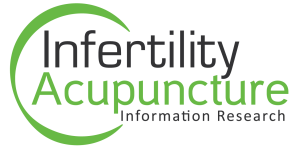In this post, we’ll discuss the article published in JAMA “The Effects of Acupuncture vs Sham Acupuncture on Live Birth Rates Among Women Undergoing In Vitro Fertilization” (1).
I know, these comments may include technical jargon, which may be hard to understand for a lay person. This post is mostly for healthcare providers helping them understand this particular study.
This new study questions acupuncture’s effects on IVF pregnancy outcomes, but when you peruse the paper carefully the validity of it comes into the red zone for several reasons:
The validity of sham:
The study design, which used Sham Acupuncture is not currently one accepted by the NIH and was not validated against the outcome measure. Therefore, we can’t be sure that the sham was an inert treatment. This study essentially compares two different modalities and does not answer the study design question. The only way around the use of a sham that has not been properly validated is to include a third arm, a non-treatment control group. Unfortunately, this study failed to include this as no patients wanted to be in no intervention arm. Horn et al. (2) performed a detailed analysis of this type of misuse of shams. Manheimer (3) in 2011 extensively discussed how IVF acupuncture sham controls may unnecessarily complicate the RCT evidence. Furthermore, acupuncturists performed real acupuncture via a sham device so that a patient would not be able to tell if they had sham or real acupuncture. This device is very fiddly and we don’t know how it affects the accuracy of real acupuncture and the outcomes.
New and untested IVF acupuncture protocol
The study used an acupuncture protocol that is not used in clinical practice. This protocol has never been validated in prior research. In fact, this protocol includes acupuncture points we would specifically avoid using in conjunction with an IVF transfer.
The treatment results of untested protocol attributed to acupuncture in general. The researchers then mistakenly applied their conclusions to acupuncture in general or all other protocols. This is somewhat analogous to prescribing an antiviral medication for a bacterial infection, which is a totally wrong treatment for it, and then concluding that all pharmaceuticals are ineffective for treating bacterial infections. We have stressed numerous times that the correct treatment protocol including syndrome differentiation, point selection, technique, dosing is essential for successful acupuncture treatment. This paper shows that their chosen untested acupuncture protocol of three acupuncture treatments, their chosen acupuncture points are ineffective increase IVF live birth rates.
Inadequate acupuncture dose?
Acupuncture is generally considered dose-dependent and although the literature has shown that as little as two treatments are sufficient to improve IVF birth outcomes (4), we typically see outcomes improve significantly as the number of treatments increases. The discussed JAMA study only used three acupuncture treatments. And we know from the previous research (5,6) that between 9 and 12 preconception treatments result in significantly improved outcomes. I have discussed this in a previous post on acupuncture dose.
When used correctly, acupuncture has been shown to improve IVF outcomes
Previously it has been shown that (5,6) used correctly and with correct protocols acupuncture benefits benefit IVF outcomes.
References:
- Smith CA, de Lacey S, Chapman M, et al. Effect of Acupuncture vs Sham Acupuncture on Live Births Among Women Undergoing In Vitro FertilizationA Randomized Clinical Trial. JAMA. 2018;319(19):1990–1998. doi:10.1001/jama.2018.5336
- Horn B, Balk J, Gold JI. Revisiting the Sham: Is It all Smoke and Mirrors? Evidence-Based Complementary and Alternative Medicine. 2011
- Manheimer E. Selecting a control in IVF and acupuncture RCTs: How sham controls may unnecessarily complicate the RCT evidence base. Fertil Steril. 2011 Jun 30;95(8):2456–61.
- Influence of acupuncture on the pregnancy rate in patients who undergo assisted reproduction therapy Paulus W.E., Zhang M., Strehler E., El-Danasouri I., Sterzik K. (2002) Fertility and Sterility, 77 (4) , pp. 721-724.(
- Magarelli PC, Cridennda DK, Cohen M. Changes in serum cortisol and prolactin associated with acupuncture during controlled ovarian hyperstimulation in women undergoing in vitro fertilization-embryo transfer treatment. Fertil Steril. 2009 Dec;92(6):1870–9.
- Hullender Rubin LE, Opsahl MS, Wiemer K, Mist SD, Caughey AB. Impact of Whole Systems Traditional Chinese Medicine on In Vitro Fertilization Outcomes. Reprod Biomed Online. 2015 Jun;30(6):602–12.



